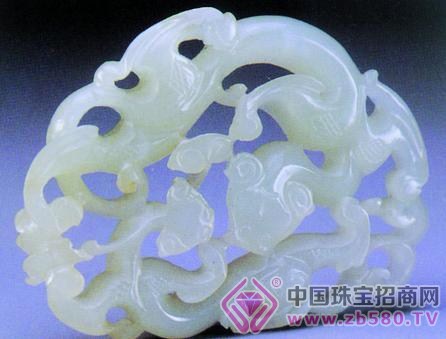
More than 120 pieces (sets) of jade articles were unveiled today at the Poly Art Museum, "Wisdom Infinity II - Ancient Jade Exhibition." These jade articles refer to the representative works from Tang to Qing.
The Tang and Song Dynasties exhibited in this exhibition showed a strong folklore tendency, showing many aspects of people's lives at that time. Flower and bird patterns appeared in large numbers, and animal prints were more realistic. In the Ming and Qing Dynasties and later jade articles, a large number of tea sets, tableware, stationery, and literary works appeared in the utensils, and a large number of jade furnishings appeared.
Zhang Guangwen, an expert on ancient jade in the Palace Museum, said that the history of Chinese jade has lasted for six or seven thousand years since the Neolithic Age. The woman in the Shang Dynasty was the representative of the ancient jade collection. A large number of jade articles including the Hongshan culture period were unearthed in her tomb. After the emperors of the past, the jade was associated with the kingship, the most prominent of which was the Emperor Qianlong of the Qing Dynasty. The jade that he made during his reign, known as the "Long Gonggong" because of its special exquisiteness, has always been the darling of the collection world.
In this exhibition, there is a bottle of Qianlong Baiyu Canglong Jiaozi, which pinned the expectations of the Emperor Qianlong for the next successor. Similar to it can be found in the collection of the Palace Museum in Beijing. One of the Sapphire Canglong teaches the bottle and the white jade Canglong teachor bottle should be the middle and late works of Qianlong.
There is also a piece of Qingbai jade sailing ship from the 18th to the 19th century. It is carved with relief, round carving and openwork. The Palace Museum and the Capital Museum contain a number of similar works.
Jade culture runs through the history of Chinese civilization, but jade in different periods has different characteristics. For example, the screens on display on the same day have been screened from the white jade spring water in the Yuan Dynasty to the 19th century jasper four seasons flowers, which reflect the same style of the times. According to reports, the screen appeared in the Zhou Dynasty as a special instrument for the emperor, as a symbol of status and power. In the famous works of the Southern Tang Dynasty painter Gu Yuzhong, "Han Xi Zai Night Banquet", there are many screens in the room. In the Qing Dynasty, the wind of the screen production was very prosperous, and there was a change of scenery.
Net Bag,Light Cotton Net Bag,Cotton Net Bag,Durable Cotton Net Bag
SHAOXING CITY JINYAO TEXTILES CO.,LTD , https://www.jinyaotextile.com